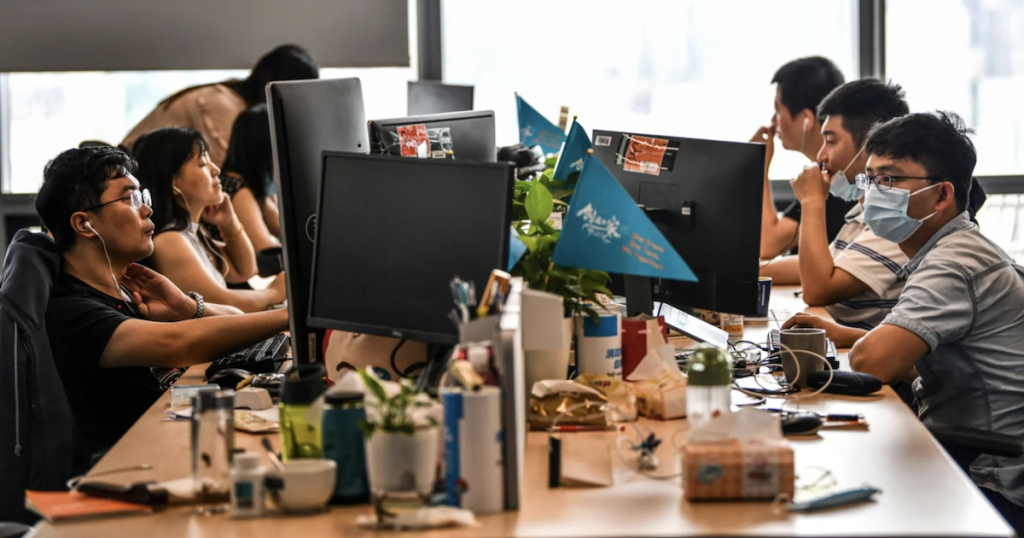Disclaimer: Opinions expressed below belong solely to the author.
The Singapore government published its labour market figures for Q1 2022 only last month, but thanks to third-party data, we can estimate that employment situation remains very favourable to all jobseekers.
Data from a periodical survey conducted by one of the largest employment websites, Indeed, revealed this month that aside from Australia, Singapore is the only developed economy where the number of vacancies more than doubled over the levels recorded before the pandemic.
By the end of May 2022, postings for jobs in Singapore listed on Indeed.com were up 106 per cent from their level on 1 February 2020. As of writing of this article (18 July 2022), there are over 146,000 job offers, including 100,000 that are seeking full-time employees.
Even if we consider that some may be duplicates or have already been filled, it still appears to be broadly in line with government’s figures, which estimated 128,000 vacancies in the economy as of Q1 of 2022 (a historically record high).
PMETs in demand
If you’re thinking that it might just be a flood of offers for low-paid, low-skilled foreign workers after the pandemic exodus, then you’d be wrong (they are coming, of course, though through other channels).
According to MOM’s Labour Market Survey, PMET positions made up 56 per cent of vacancies in Q1, meaning that mid- to upper-range jobs for residents are still looking for qualified employees.
In fact, there were on average 2.42 jobs available for a single unemployed person in the economy.
This is despite the fact that resident employment already surpassed pre-pandemic levels in March 2022, rising by 3.9 per cent over December 2019.
Jobs need filling so badly that local labour force participation in Singapore exceeded 70 per cent for the first time on record, increasing in 2021 by 2.5 per cent over 2019, with more people either staying or returning to work amidst favourable conditions (older workers in particular).
Remote jobs in retreat
Interestingly, likely due to the rapid reopening of the economy, the number of listings containing terms related to remote work dipped by May by over 25 per cent — from a little over 10 per cent of the total to just 7.4 per cent listings (though it’s still more than three times higher than prior to the pandemic).
Whether this is a genuine trend or just a hiccup in a generally changing environment (with greater openness to remote work) remains to be seen (accuracy of this particular claim by Indeed might be questioned too, as some companies may not openly advertise employment flexibility).
Local wages grow by 7.8% in Q1, outpacing inflation
While most commentators Monetary Authority of Singapore (MAS) focused on the implications of the latest policy statement by MAS — which signalled continued efforts to tighten the monetary policy, trying to slow down further weakening versus the USD — there’s more to find when you read deeper into it.
What caught my attention is this little nugget, revealing the latest data about wage growth in Singapore, in the following explanation of domestic inflationary pressures:
In particular, the resident unemployment rate remained low and resident wage growth rose to 7.8 per cent year-on-year in Q1. With domestic consumer spending robust, businesses passed on some of these accumulated costs to consumer prices.
– Monetary Authority of Singapore (July 14, 2022)
This means that nationwide wages continue to grow in real terms, outpacing headline inflation of 5.6 per cent. As a result, it’s quite possible that the median salary in the economy may already reach S$5,000 in 2022, a year earlier than anticipated.
Enjoy it while it lasts
Prudently, I would like to end on a cautious note, though. Singapore is excellently positioned to defend itself from major storms, but it is not invulnerable. There are mounting global risks on the horizon which may all come to hit us together.
There’s still rampant inflation and fears of a recession in the US, coupled with uncertainty over energy supplies to Europe which could send the EU economies into a downward spiral too and, if that wasn’t enough, China shows early signs of a looming mortgage crisis, coupled with stagnation induced by its overly restrictive Covid-19 lockdowns.
If you’re looking for a career upgrade or a salary raise, now is probably the best time to give it a shot due to the shortage of qualified labour in Singapore coupled with momentum provided by post-Covid reopening.
Featured Image Credit: Hector Retamal (AFP) via Getty Images
